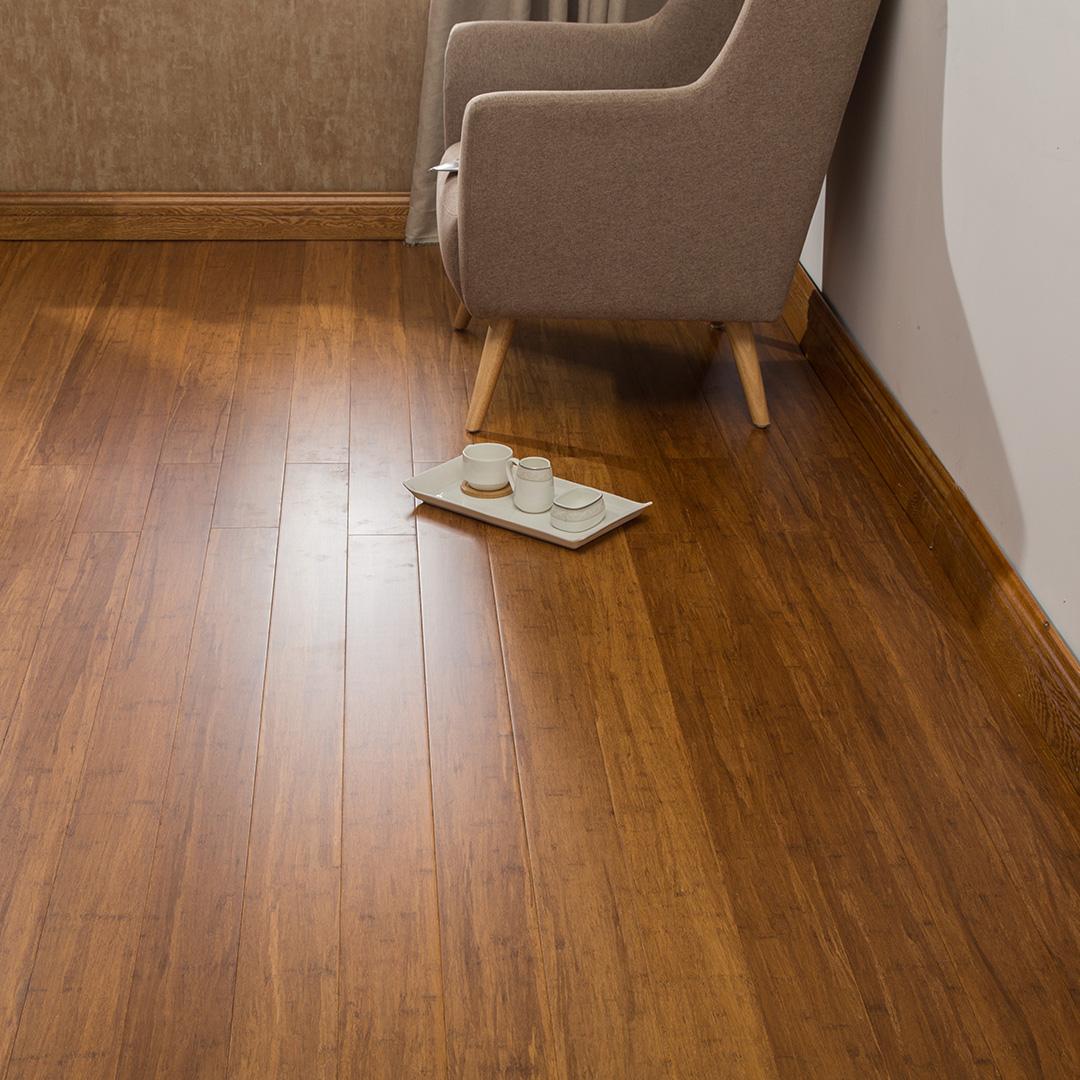When it comes to choosing the right flooring, homeowners are looking for a combination of beauty, durability, affordability, and sustainability. One material that checks all these boxes—and continues to gain popularity—is carbonized bamboo flooring. With its warm, rich tones and subtle natural grain, carbonized bamboo is not just a stylish alternative to traditional hardwood; it's also a more eco-friendly and cost-effective solution.
As a technologist working in a bamboo flooring factory, I’ve seen how carbonized bamboo has evolved from a niche product into a mainstream choice for homeowners and commercial designers alike. Let’s take a closer look at what makes this flooring option so appealing.
Natural Beauty That Rivals Traditional Hardwood
One of the biggest reasons homeowners are drawn to carbonized bamboo is its natural grain and warm color. Through the carbonization process, the bamboo takes on a rich caramel or coffee-like tone, which adds depth and elegance to any interior.
Unlike synthetic options or printed laminates, carbonized bamboo features organic variations in grain and texture. These natural patterns give each plank a unique character, much like high-end hardwood species such as walnut or cherry—but without the environmental cost or high price tag.
Whether installed in a cozy living room, a modern kitchen, or a commercial lobby, carbonized bamboo complements both traditional and contemporary design styles.
A Sustainable Flooring Choice
Carbonized bamboo offers more than just good looks—it’s one of the most sustainable flooring materials available today. Bamboo is not a tree but a type of grass, and it grows incredibly fast. While hardwood trees can take 30 to 100 years to mature, bamboo can be harvested in just 4 to 6 years.
Thanks to this rapid growth cycle, bamboo can be harvested without deforestation. After harvesting, the root system remains intact and regenerates naturally, reducing soil erosion and preserving biodiversity. Most bamboo used for flooring is grown in managed plantations, ensuring a consistent, renewable supply.
For homeowners who care about the environment, choosing carbonized bamboo over traditional hardwood is a meaningful step toward reducing their carbon footprint.
Lower Price, Higher Value
Another reason carbonized bamboo is winning over homeowners is its affordability. Compared to traditional hardwood flooring, carbonized bamboo is significantly more cost-effective—often by 20% to 40%. Yet, it delivers the same (and sometimes better) visual appeal and performance.
This makes bamboo an ideal choice for homeowners who want to upgrade their floors without exceeding their renovation budgets. Whether you're remodeling a single room or flooring an entire home, carbonized bamboo provides high-end style at a mid-range price.
Proper Treatment for Long-Term Performance
A common concern with bamboo flooring in the past was its vulnerability to moisture and pests. But modern carbonized bamboo flooring undergoes rigorous treatment processes that address these issues.
During manufacturing, the bamboo is:
- Boiled and steamed to remove sugars, starches, and fats that could attract insects or mold.
- Carbonized through controlled heating, which not only changes the color but also stabilizes the material.
- Pressed under high pressure (especially in strand-woven varieties) to increase density and durability.
- Finished with protective coatings such as aluminum oxide for added scratch resistance and long-lasting beauty.
The result is a flooring product with stable quality, low formaldehyde emissions (often CARB Phase 2 compliant), and excellent resistance to daily wear and moisture.
Proven Success in Commercial Projects
While homeowners love carbonized bamboo for its comfort and aesthetics, it’s also proven itself in demanding commercial environments. From retail stores and offices to hotels and restaurants, carbonized bamboo has shown that it can handle high foot traffic and fluctuating indoor conditions.
Its dimensional stability, scratch resistance, and attractive appearance make it a go-to option for designers and contractors looking for a sustainable material that doesn't compromise on style or strength.
If bamboo flooring can succeed in a busy café or office hallway, it’s more than capable of withstanding the daily life of a family home.
A Floor That Feels Like Home
Carbonized bamboo flooring offers more than just a surface to walk on—it brings warmth, comfort, and peace of mind. Its natural grain adds character to every room, while its eco-friendly origin allows homeowners to feel good about their purchase.
Thanks to modern processing and improved quality control, carbonized bamboo is no longer a “budget alternative” but a premium product in its own right. It’s a smart choice for those who want the look and feel of hardwood without the environmental impact or high cost.
Whether you're building a new home, renovating a favorite space, or designing a commercial interior with sustainability in mind, carbonized bamboo is a flooring solution that delivers on every level—naturally beautiful, responsibly made, and built to last.



